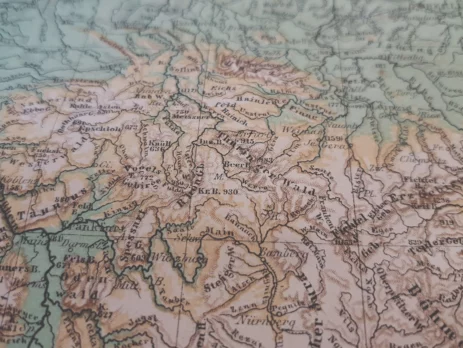From Data to Art: Transforming Biblical Narratives into Digital Maps
The Bible, with its rich tapestry of stories, journeys, and events, has captivated hearts and minds for centuries. Its narratives span across different lands and times, presenting a vast amount of data that can sometimes feel overwhelming to comprehend. However, with the advent of digital mapping technology, this abundance of data can be transformed into captivating art – digital maps that offer a visual and interactive way to explore the biblical narratives. In this article, we will delve into the process of converting data into art, as we explore how digital maps can beautifully and meaningfully represent the timeless stories of the Bible.
The Power of Data Visualization
Data visualization is a powerful tool that allows us to present complex information in a clear and concise manner. With the vast amount of data present in the Bible – from the geographical locations of events to the journeys of biblical characters – transforming this data into visual representations can bring the stories to life in ways that textual descriptions alone cannot achieve.
Understanding the Story in Data
Before transforming biblical narratives into digital maps, it is crucial to understand the story in the data. Immerse yourself in the biblical texts, consult historical sources, and study commentaries to gain a comprehensive understanding of the events and locations described. This deep comprehension will guide the design of the digital map and ensure its accuracy in conveying the essence of the narratives.
Selecting the Right Data Points
In the process of data visualization, it is essential to select the right data points that are most relevant to the story you wish to portray. For instance, when depicting the Exodus of the Israelites, key data points may include the route they took, the locations of significant events, and the duration of their journey. Careful selection of data points ensures that the digital map focuses on the most salient aspects of the narrative.
Choosing the Appropriate Mapping Platform
To create compelling digital maps, choosing the appropriate mapping platform is crucial. Several user-friendly online tools, such as Google My Maps or Mapbox, provide easy-to-use interfaces for beginners. For more advanced capabilities and customization, Geographic Information System (GIS) software like QGIS or ArcGIS Pro offers greater flexibility. Select the platform that best suits your proficiency level and the complexity of the digital map you wish to create.
Designing the Aesthetics
Data visualization is not just about presenting information; it is also an art form. Pay attention to the aesthetics of the digital map, selecting color schemes, fonts, and icons that align with the biblical context. The design should be visually appealing and complement the story being told, allowing users to engage with the map in a meaningful and enjoyable way.
Incorporating Interactive Elements
Digital maps offer the unique advantage of interactivity. Take advantage of this feature by incorporating interactive elements that enhance the user experience. For instance, clickable markers can reveal additional information about specific events or locations, while pop-up boxes can display relevant Bible verses or historical context. These interactive elements transform the digital map from a static representation into an immersive and engaging experience.
Striking a Balance Between Art and Accuracy
While creating artistic digital maps, it is essential to strike a balance between aesthetics and accuracy. Ensuring that the data and locations are represented correctly is crucial in preserving the integrity of the biblical narratives. However, artistic flair can elevate the map and create a more profound impact on the viewer.
Inviting Exploration and Reflection
The goal of transforming data into art through digital maps is to invite exploration and reflection. Encourage users to interact with the map, explore the events and locations, and draw connections to their own lives. Digital maps serve not only as tools for learning but also as catalysts for deeper understanding and personal engagement with the biblical stories.
Digital maps offer a transformative way to convert data into art, allowing us to visually and interactively explore the biblical narratives. Through data visualization, careful selection of key points, and the artful design of the map, we can present the timeless stories of the Bible in captivating and meaningful ways. As we immerse ourselves in the process of creating digital maps, we bridge the gap between data and art, transforming the abundance of information into a visual masterpiece that breathes life into the ancient stories of faith, wisdom, and human experience. Ultimately, the fusion of data and artistry in digital Bible maps opens new avenues for engaging with the sacred texts, enabling us to connect with the Bible in profound and transformative ways.

